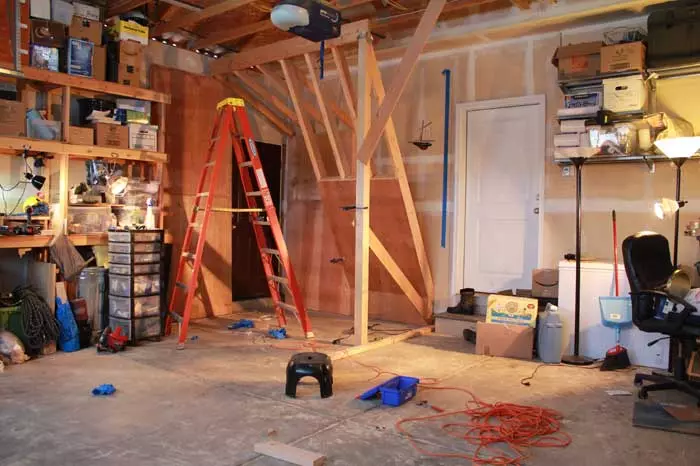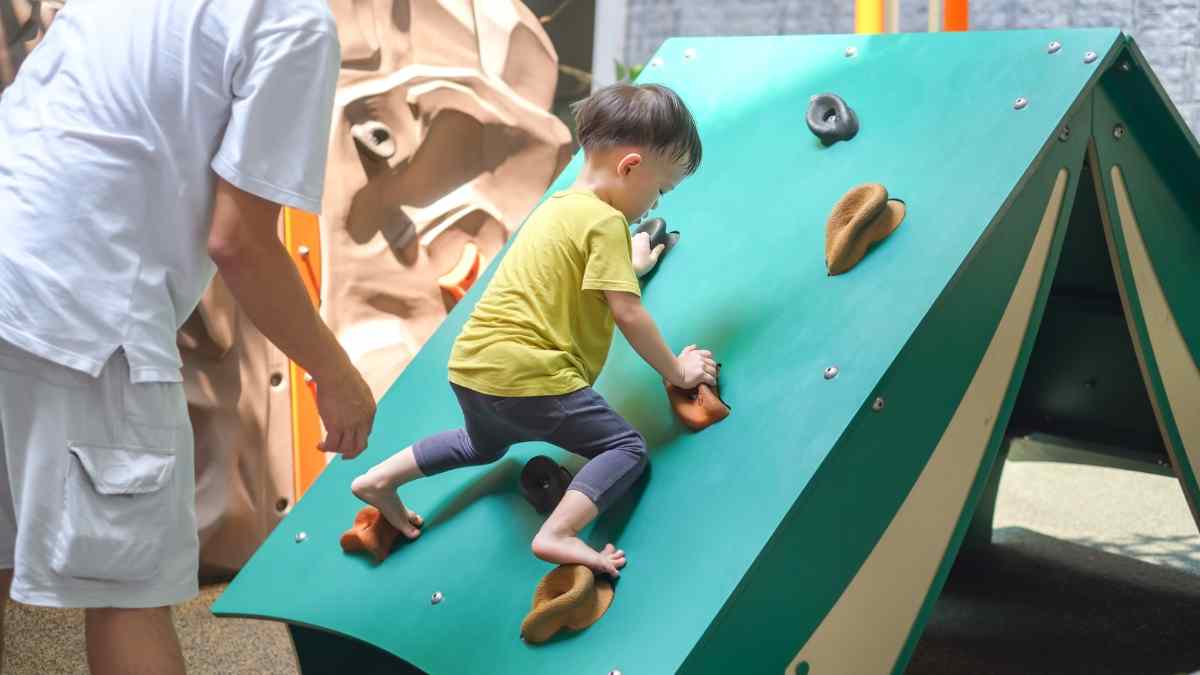Table of Content
You’ll need at least 8 feet of clearance to build a safe and functional wall. Building a rock climbing wall outdoor in your backyard is the perfect way to train and have fun. But here are a few things you need to consider before you start building.

Put a nail or screw in the top, middle, and bottom of the plywood at each support beam. If you place 2 pieces of plywood next to one another and notice that it’s bowing, put another nail or screw in so it lays flat. For a free-standing wall, make sure the support holds the full weight of the frame without tipping over. If there is any wobbling, add more weight to the base with extra boards. Use a stud finder on your walls to find anchoring points if you plan on attaching your climbing surface directly to the wall.
How to Build a Climbing Wall
You should also consider weatherproofing measures during the design phase of your build. If you are building an indoor climbing wall in your garage, you'll need different weatherproofing than if your wall is in the backyard. Climbing holds can be made from a variety of materials, including concrete, wood, metal, and even plastic. You can also make your own climbing holds by drilling a hole in a piece of wood or plastic and attaching it to an anchor.
You can add sand to produce texture just like we mentioned in the previous section. If you are still having issues, the next option is to screw the hold in place. Most climbing holds have a hold already placed in it for this purpose, but you can drill your own if needed. Be sure to countersink it if you do, this reduces the risk of cracking your hold and ensures the screw head isn’t protruding. Screwing the hold in place does make an additional, often unsightly hole in your wall. For most indoor climbing walls, black oxide finished bolt is the industry standard.
Follow This Old House online:
Creating a stable base for your wall may take extra steps in this case. Most modern walls are made out of a thick multiplex board with holes drilled into it. The most common materials used in the construction of a wall are wood, brick, concrete, and steel. Wood is the most commonly used material, followed by brick and concrete. If you want to build a climbing wall out of wood, you can choose between plywood and OSB.
We’ve climbed on our ¾” wall for several months with no issues! This size is also used by US climbing hold manufacturers as the basis for t-nut and bolt lengths. A freestanding rock climbing wall might have a frame that is larger than the wall itself, so make sure that will fit your space as well. Roughly holds per sheet of plywood is a nice and easy standard to go by. You will probably start at less than that but you can gradually work your way up to that. When I set out to build our home climbing wall, I selected the back corner or a large shop building.
Why build a climbing wall?
This balance is important to us to stay in shape for both sports. We moved away from Seattle and out to North Bend to be closer to the mountains at the end of 2020. With the move, we are about 45 minutes away from all of the climbing gyms in the Seattle and Bellevue area. Assemble the boards into an outline of what you want the wall to look like. Lay the boards on the floor in the shape of your wall so the narrow edges of the boards are face up. Use either a nail gun or hammer where the planks meet and place at least 2 nails at each intersection.
A quick Google search made me feel like I was wading into waters that were too deep for my nascent carpentry skills. But my daughter’s sad face—she’s a competitive climber who is really missing her 4-days-a-week climbing gym workouts—and my love of a good project made me persevere. Use an Allen wrench, and the bolts that came with the holds, to attach the holds to the wall in a random pattern.
Take some time to consult your climbing gym trainer or climbing buddies when visualizing your climbing wall. For outdoor walls, you’ll need to make a supporting wall and waterproof literally everything. Regardless of how good a job you do, the holds won’t stay as long as they would indoors. Although indoor walls come with their own subset of problems. In order to become a rock climbing instructor, you first need a passion for rock climbing and working with others. The key to making profits is to have enough paying members and daily-use customers to make more than the costs of operations.
It’s essential to ensure the frame is level so your wall will be stable. If you’re unsure where to start, consider creating a simple rectangular wall. This is an excellent option if you’re short on space or are just beginning with climbing. You can build a climbing wall that is safe, sturdy wall custom-tailored to your needs and preferences with some know-how, tools, and materials. We have always talked about the need to build a home wall since we planned to move to North Bend.
This is a simple, clean, and very effective option you will see employed by setters quite often. There’s not much more frustrating than having a climbing hold spin out on you mid-route. This is a common problem with bolted holds, but there are several ways to prevent it. Each hold is different, and you will need to check the bolt on each hold you pair it with. Seat the bolt in the hold and check that the threads extend at least 3/4” past the base of the hold, and that it does not extend past the threaded portion of the bolt.

Tools, shipping, lumber delivery, and even waterproofing supplies like a tarp, can add up. This should help you develop an idea of what is possible and ideal in your space, as well as what you want. As you are getting familiar with what options for home climbing exist, also consider what the primary use of your wall will be. For example, kid friendly entertainment, casual home exercise, or a goal-oriented training tool. For example, if you are looking for a wall that is easy to climb, you will need to start with the easiest steps and work your way up to the hardest.
You can even choose to paint your wall with your choice of paint. REI has an informative page on constructing a wall that will go into further detail than we do here on the actual construction of the framework. My recommendation would be to go no less than 20° overhang.

Plenty of large handholds and footholds make the climb easier, so be generous. Most climbers like a wall with a variety of holds to practice. To ensure you create a thorough material list, double check that you’ve thought through how all pieces will fit together, be supported, and secured.
Tools & Materials
First, you will need to find the studs and map their layout. Stud Finders usually work great, but using a metal detector or magnet to find the drywall screws as discussed above is often more reliable. There are lots of great resources out there that go into more depth on this, here is one that covers the basics .

Be sure the pads extend out of your wall zone to ensure safe landing during swings and other rapid climbing moves. Drill the holes before attaching the T-nuts for better efficiency.Attach everything to the frames, and then bolt and properly clamp them down. If you attach your climbing wall onto an existing wall or surface in a room, attic, or basement, it’ll reduce the work. Covering a couple of electric outlets is fine, but avoid building on a wall with windows or doors. Ensure proper airflow and access to the room with the climbing wall.

No comments:
Post a Comment